This lovely song captures a sense of eternity and ministers to the inner places of one's soul. Here my friend Mary Bowers offers a beautiful rendition of this traditional hymn via her distinctive voice and unique powers of artistic interpretation.
|
Words by Aurelius C. Prudentius, 4th Century, translated by John M. Neale and Henry W. Baker. This melody is also known as "Divinum Mysterium," 13th Century Plainsong arranged by C. Winfred Douglas in 1916. My friend Mary has sung professionally with the Phoenix Bach Choir (now known as the Phoenix Chorale) and has studied Classical music for many years. She loves to play the hammered dulcimer and is an accomplished pianist and organist who also loves folk music. I accompany Mary on my vintage 1950's Scandalli accordion, a 4/5 reed instrument in LMMH configuration.
This lovely song captures a sense of eternity and ministers to the inner places of one's soul. Here my friend Mary Bowers offers a beautiful rendition of this traditional hymn via her distinctive voice and unique powers of artistic interpretation.
0 Comments
My dear friend Mary sings this traditional Southern American folk melody as I accompany her on my vintage 1950's Scandalli accordion (LMMH, 4/5 reeds). Mary has sung professionally with the Phoenix Bach Choir (now known as the Phoenix Chorale), and is also an accomplished pianist/ organist and hammered dulcimer player. She loves Classical music as well as folk music and traditional hymns and spirituals
This Southern American Folk melody is one of my favorites and offers unique changes from major to minor key in an atmospheric and captivating manner. My friend Mary Bowers reveals her marvelous gifts in vocal artistry in this memorable video recorded several years ago. The sheet music is from a collection of hymn tunes and folk songs arranged by Hal Leonard. The vintage 1950's Scandalli accordion was given to me as a gift from friends around 2003 at a time when I could not afford to purchase a new instrument. My friend Jerry Sleger from Wisconsin did some repair, tuning and restoration on this accordion, allowing for full performance capability of those remarkable Italian reeds. Impresiones Acordeon: En vista de las montanas Watchung; Akkordeon Impressionen: In Anbetracht der Watchung Mountains; Akordeon Impressions: W zwiazku z Watchung Gorach; Accordion Impressions: In View of the Watchung Mountains. This improvisation reflects upon some of the experiences I enjoyed while delivering mail for the Somerville Post Office in 1975 and 1976 in Somerville, New Jersey. Some of the delivery routes in Somerville were mounted routes which utilized Jeeps for motorized transport, while other routes involved walking from the main office to the point of delivery and then walking back after delivering the assigned route. I had the pleasure of delivering many neighborhoods in this area and then taking time for lunch at a pre-determined place such as the Somerset Medical Center. You were allowed 30 minutes for lunch, just enough time for a quick salad or sandwich at the Medical Center's coffee shop and café. While enjoying lunch, I often would gaze out the window looking North to the beauty of the Watchung Mountains, a lovely stretch of low hills which dotted the horizon in magisterial fashion. The entire line of hilltops was visible from the large windows at the café, a view which I can still vividly remember to this day. Though these hills measured between 400 to 500 feet in elevation at some points, the image they presented from a distance suggested they were just barely visible, perhaps seeming to measure only slightly higher than the far horizon. But what beauty they did possess, drawing my eye along the characteristic contours of their solidly impressive length. So my vision was drawn to these contours along the North horizon, a moment which I have attempted to capture in this impressionistic music. I came to love these neighborhoods where I delivered the mail, walking down the tree-lined streets and boulevards, envisioning both angular entities and smooth transitions along the well-kept lawns and clean sidewalks and spacious driveways. There was a palpable atmosphere of small town America in such lovely neighborhoods, almost as if every day could be considered a cinematic adventure enlivened by the noble outreach of our appointed tasks. This music attempts to clarify some of these artistic impressions, a retrospective recollection of events which transpired some 37 to 38 years ago. Performed upon my vintage 1950's Scandalli, a 4/5 reed instrument in LMMH configuration. One of the joys of delivering the mail is seeing all aspects of a particular neighborhood and getting to know the customers who live along the streets and boulevards of a geographical area. When I started as a Letter Carrier in Somerville, New Jersey in June of 1975, I quickly became immersed in the sensory elements of walking different routes and observing the manifold varieties of visual beauty along the way. You notice the noble green avenues of leafy trees and freshly cut lawns, the trimmed hedges and colorful flower gardens, the lovely architecture of historical homes with lace-curtained windows and white trimmed wooden porches. It is almost like a nostalgic scene from Rod Serling's "Walking Distance," a favorite Twilight Zone episode from October, 1959, where Martin Sloan (Gig Young) goes back in time to an earlier and more idyllic age. You can sense the history of small town America and envision the mystery and the majesty of a thousand different patterns involved in the life of a petite representation of civilization. The accordion improvisation above is a response to my memories of delivering the mail in Somerville and often catching a glimpse of the distant horizons as seen from the streets where I was walking my assigned route. I remember so distinctly the beautiful lines of the Watchung Mountains to the north, how these shapes seemed to dominate the horizon in a poetic and thoroughly engaging manner. You could trace these artistic lines with your eye and never tire of their encompassing beauty or subtle power of expression. To me it seemed like a form of musical expression in which I took considerable delight. As I do not have a pipe organ, I have tried to capture via the accordion a sense of the musical nature of those moments in time. Reflections Upon Rural Images and Country Roads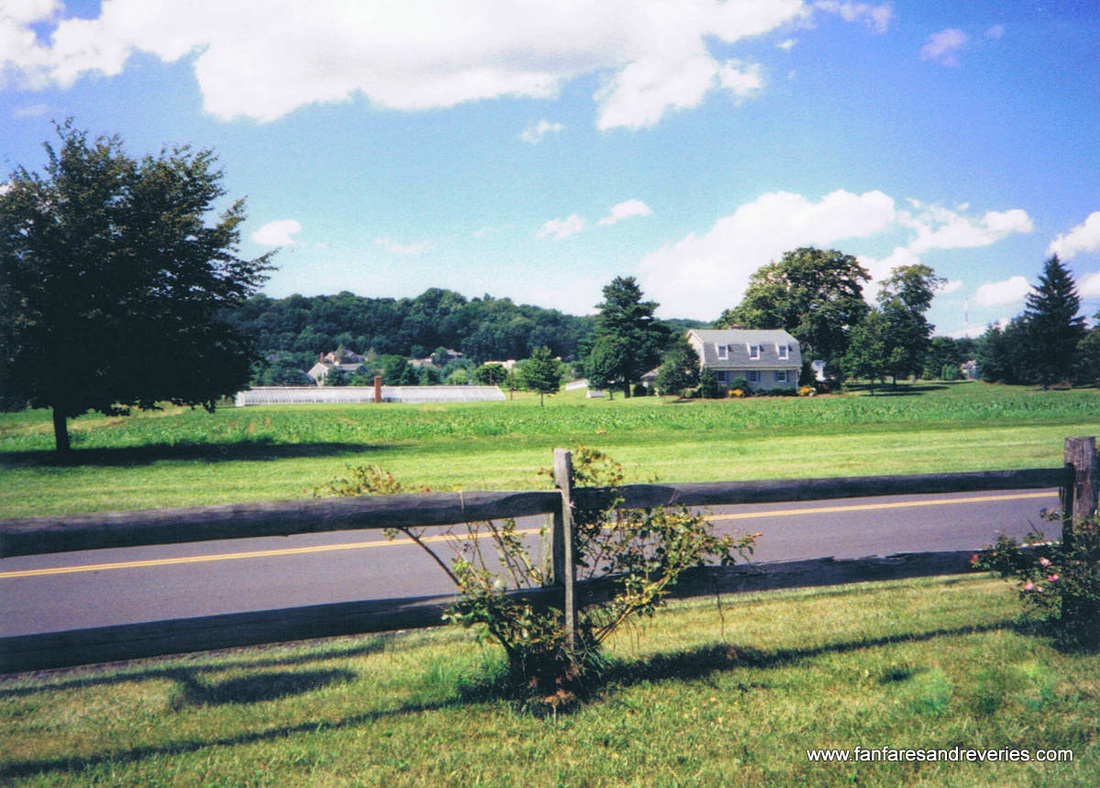 Along Washington Valley Road in Warren, New Jersey. This area features some of the nicest rural roads in the Garden State, although it has increasingly lost farmland to residential and commercial development over the years. In the Summer and Fall you can find fruit and vegetable stands which offer a fine assortment of country goods. 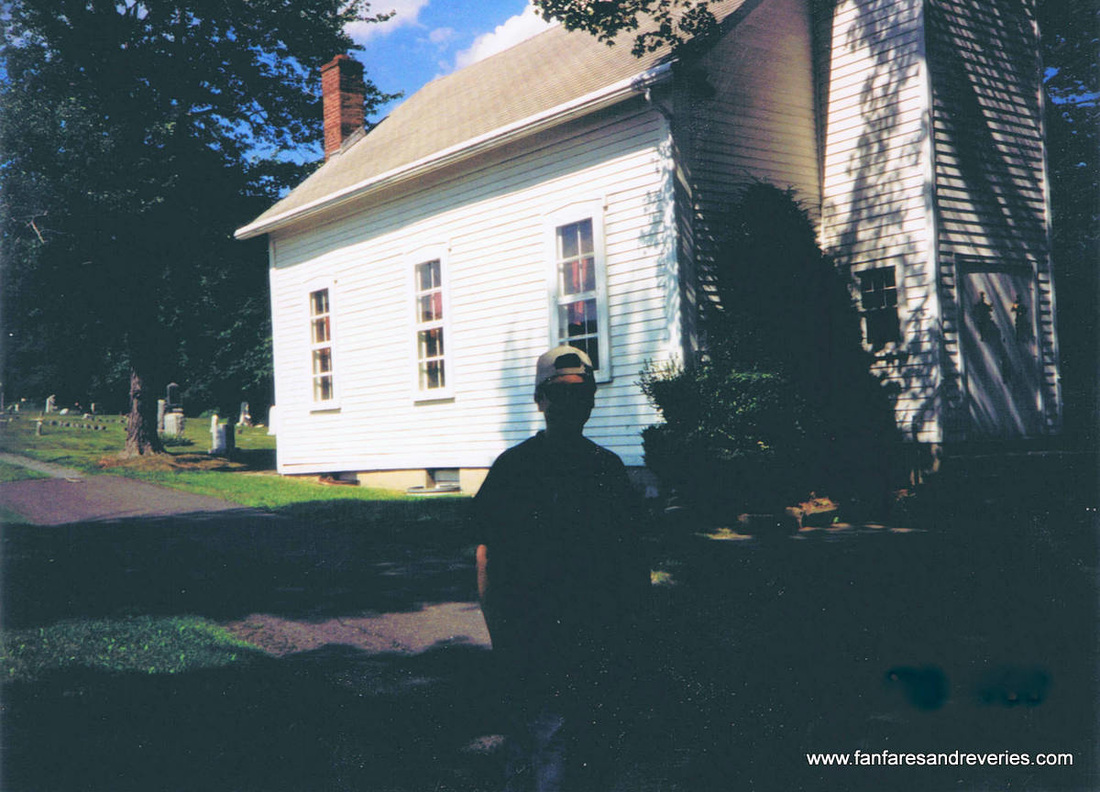 Springdale United Methodist Church, Warren, NJ. Building erected 1840-41, enlarged in 1894, with small bell tower added in 1904. This church stands at the intersection of Morning Glory Road and Washington Valley Road and still holds services for the local population. The land was originally bought in 1839. 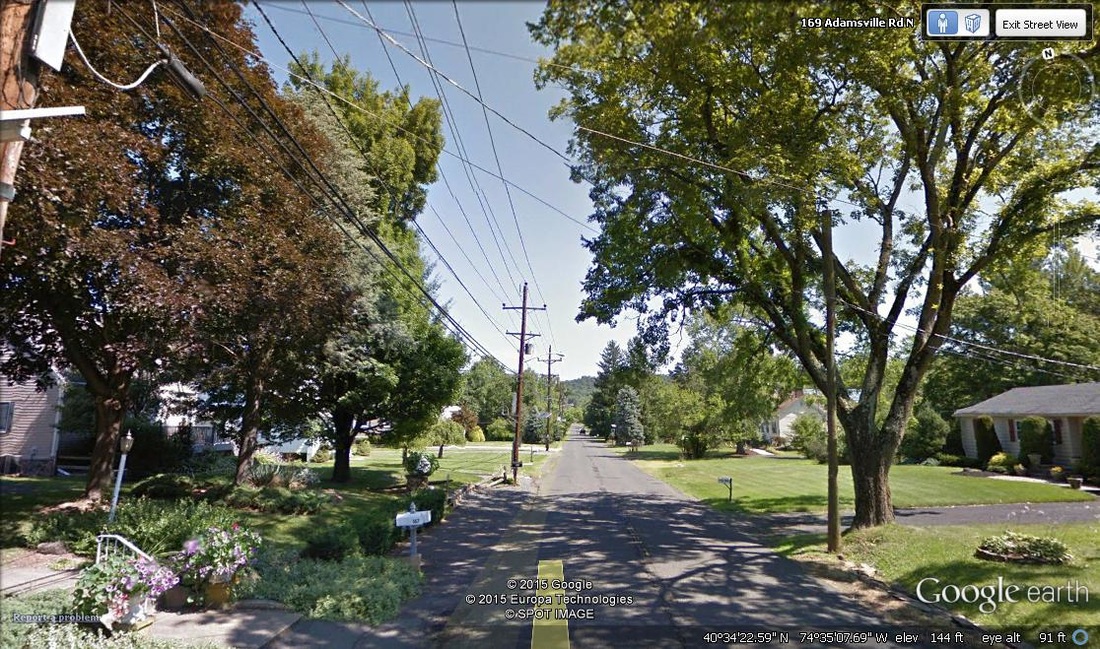 A Google Earth view of the distant Watchung Mountains at the north end of Adamsville Road in Bridgewater, New Jersey. This street is not far from where I often stopped to eat lunch at the Somerset Medical Center in Somerville while delivering the mail. The mountains make for a noble backdrop as you walk along the street and then notice their fascinating, looming presence. Lines to follow with your eyes! An American Spiritual song with lyrics written by Hap Palmer. The sheet music is published by Price Stern Sloan, part of the "Wee Sing" series collected and arranged by Pamela Conn Beall and Susan Hagen Nipp. Performed upon my vintage 1950's Scandalli accordion, a 4/5 reed instrument in LMMH configuration. I believe that these may be handmade reeds, a noteworthy example of Scandalli's exceptional quality and very fine tuning. Partial restoration has been done on this instrument by my friend Jerry Sleger.
Scandalli reeds are some of the best in the world and really shine in the older vintage models. This particular accordion is the one given to me as a gift many years ago, a gift that brought me back to music after a long journey apart from playing. These reeds have a distinctive sound with a nice assortment of treble (8) and bass (4) voices. For an instrument with 4 treble reed-blocks and 5 rows of bass reeds, this is a fairly lightweight model (about 20 lbs.) with a rather petite 17 inch keyboard. The Scandalli occasionally breathes with a kind of orchestral splendor which I have not heard in many accordions. The bass can growl with some very deep notes and the treble voices can sing with charming ease and thorough acoustic enchantment. This American Spiritual is a good example of the range and tonal colors available on this vintage instrument. Special thanks to Karissa and Elisa and also to my friend Jerry. This traditional Irish folk song is also known as "Cockles & Mussels," or under the title "In Dublin's Fair City." It was first published in 1883 at Cambridge, Massachusetts, but the song may be of earlier origin. This song is featured on the soundtrack for the notable film "A Tree Grows In Brooklyn," directed by Elia Kazan and released in 1945, also known as "Lazos Humanos." In that film, James Dunn plays Johnny Nolan who sings and plays the piano in a touching and memorable scene. As Johnny sings for Francie (Peggy Ann Garner) and Katie (Dorothy McGuire) and Neeley, one can feel the passion of the artist who offers up portions of his soul as he shares his talent with others. Performed on my vintage Scandalli accordion, an instrument from the 1950's still capable of touching hearts and influencing modern minds. This Scandalli is one of my favorite accordions, sounding good on folk music, Classical compositions, popular tunes and improvisation. The reeds are of very high quality, probably handmade and mounted on beautiful reed-blocks which exhibit great Italian craftsmanship. This tune appears in Elia Kazan's film "A Tree Grows in Brooklyn" as Johnny Nolan walks to and from his apartment in turn-of-the-Century urban America (circa 1900). James Dunn won an Academy Award for his sensitive portrayal of the life and relationships of Johnny Nolan, and Peggy Ann Garner won an Academy Juvenile Award for her dramatic portrayal of Johnny's beautiful daughter Francie. Accordion Impressions: Along a Country Road An improvisation reflecting upon memories of a day hike along Possumtown Road in Piscataway Township, New Jersey in 1958 or 1959. My friend Bobby and I were Cub Scouts invited by the local Scoutmaster to attend a day hike with about 8 or 10 other Scouts along one of the country roads in rural New Jersey. We started out early in the morning on either a sunny Spring or Summer's day, traveling south to Cedar Avenue by crossing the railroad tracks of the Jersey Central and Erie Lackawanna lines and following the rural road to Possumtown Road where we began to travel eastwards along a two-lane country road heavily surrounded by densely wooded forests. It was a clear and breath-taking morning, dotted with wonderfully colorful scenes and crisp aromas of the country outdoors. We walked beneath a railroad overpass made of stone and steel and then continued our adventurous trek down this lovely country lane. Here and there were simple fields dotted with wildflowers, filled with butterflies, sometimes adjacent to crops and rows of tall corn bordered by tall weeds and the tangles of nature. We took great delight in the fabulous adventure of the day, enjoying the sights, sometimes slowing our pace to take in the abundant details spread so enchantingly before our impressionable eyes and senses. Across from an old stone house, someone had tied a small goat to a metal post. The little fellow greeted us with warm affection and we tarried just a moment to pet him and admire his quaint hideaway tucked next to the verdant wilderness. Somewhere down along the road, our leader asked us to pause and find a place to eat our lunches in the vicinity of a beautifully still pond strewn with rocks and green ferns. We took a well-deserved rest and enjoyed our hand-packed lunches, admiring the quiet stream and feeling the full nourishment of both the food and the spirit of the moment. When the time came to leave, we headed back the same way we had entered this lyrical domain, looking forward to begin our trek homewards and to share our adventures with our respective families. Today this area has been substantially changed, although Possumtown Road is still there in a four-lane version with a small length of the original two-lane design left in place. Now the vicinity is populated by light industrial buildings, commercial factories, parking lots and condominiums, all bordered by the fast-moving freeway known as Highway 287. There are some thickly wooded pockets of forest still situated along Possumtown Road, along with the remnants of a small pond and a nicely landscaped park. But the two-lane country road which we once traversed has been radically altered, probably no longer to be recognized through modern eyes.
Program notes: The opening theme begins at 00:14 and is quickly followed by a development section, continuing with still more development at 00:52 and the shift to stronger bass and a stirring sense of majesty at 01:26. The full master register sounds at 02:00 with a brief coda at 02:22. At 02:23 a quieter episode begins with the bassoon register, then the clarinet register at 02:44, leading to another quiet closing figure at 03:06. At 03:08 the violin register speaks, then the musette voice and a repeated development section. Further development takes place at 03:51, with the bassoon register bringing forth the lower notes in the treble section at 04:07 and a "walking bass" phrase displayed via the bass section. At 04:25 an introspective portion ascends to the fore, with the full master again introducing the original theme and development at 04:40. At 05:03 there is an impressionistic portrayal of climbing notes, as if one is reaching, walking, dreaming and marching all in continuous order. The ending portion begins at 05:21 with the closing chord heard at 05:31 until the final sounds fade away. Performed upon my vintage 1950's Scandalli accordion, a 4/5 reed instrument in LMMH configuration. The keyboard length is 17 inches. This accordion was given to me as a gift from friends around the year 2000. USA and Canada Copyright Disclaimer Under Section 107 of the Copyright Act of 1976, allowance is made for fair use for purposes such as criticism, comment, news reporting, teaching, scholarship, and research. Fair use is a use permitted by copyright statute that might otherwise be infringing. Non-profit, educational or personal use tips the balance in favor of fair use. This video is made solely for the purpose of study, review or critical analysis purposes only. I call this "Painting with Reeds" because I love the evocative sounds of these vintage Italian reeds. In the same way an artist would paint with a full range of impressionistic colors or in an impressionistic style, I find that the reed voices of a good accordion are capable of creating an atmospheric environment readily descriptive of an event, a person, a time, a mood, a specific setting or a range of ideas. |
Author
|
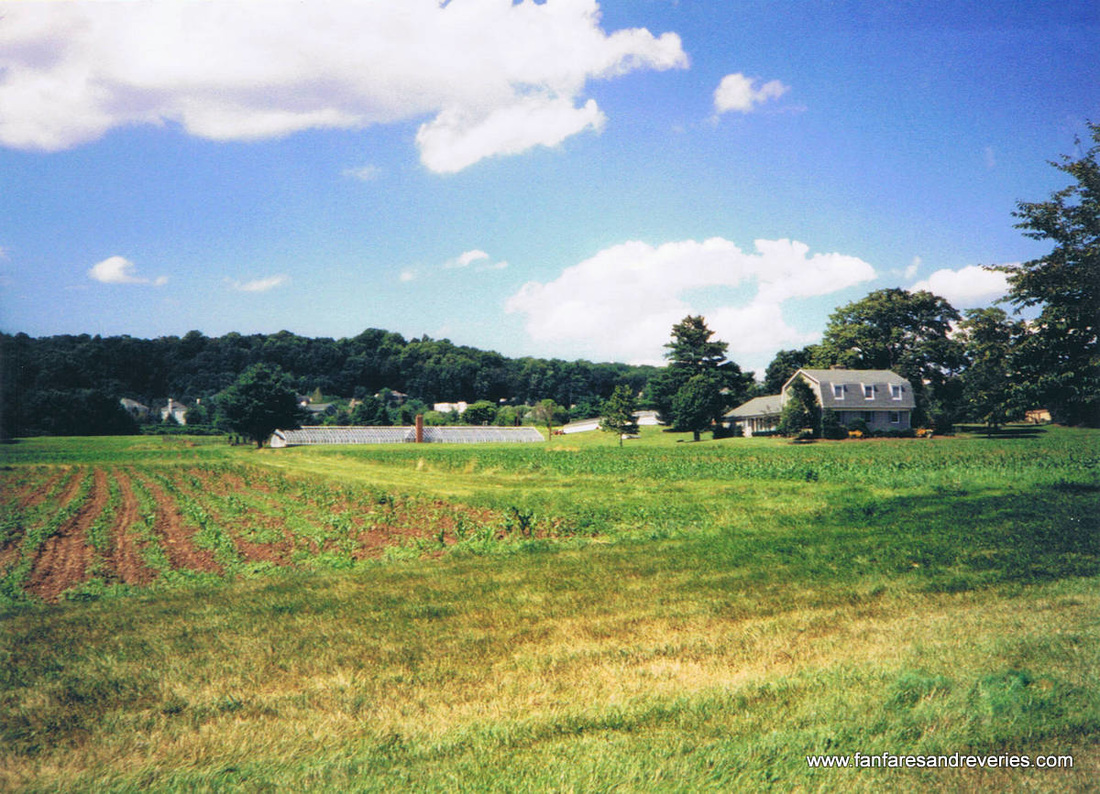
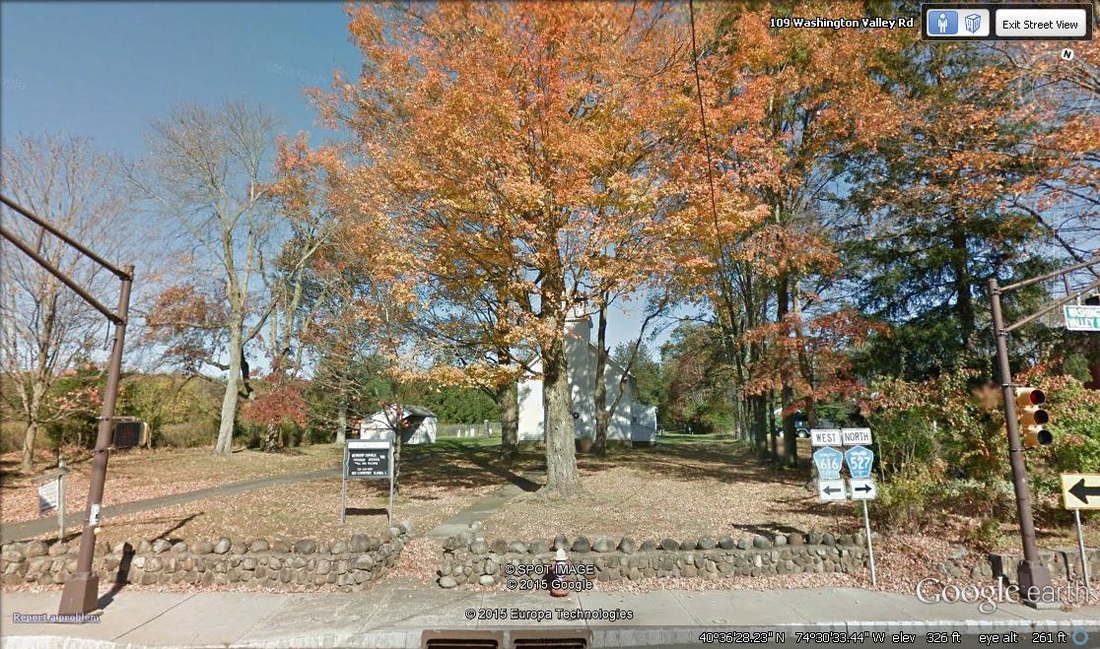
 RSS Feed
RSS Feed